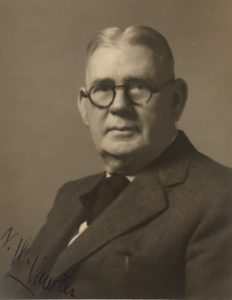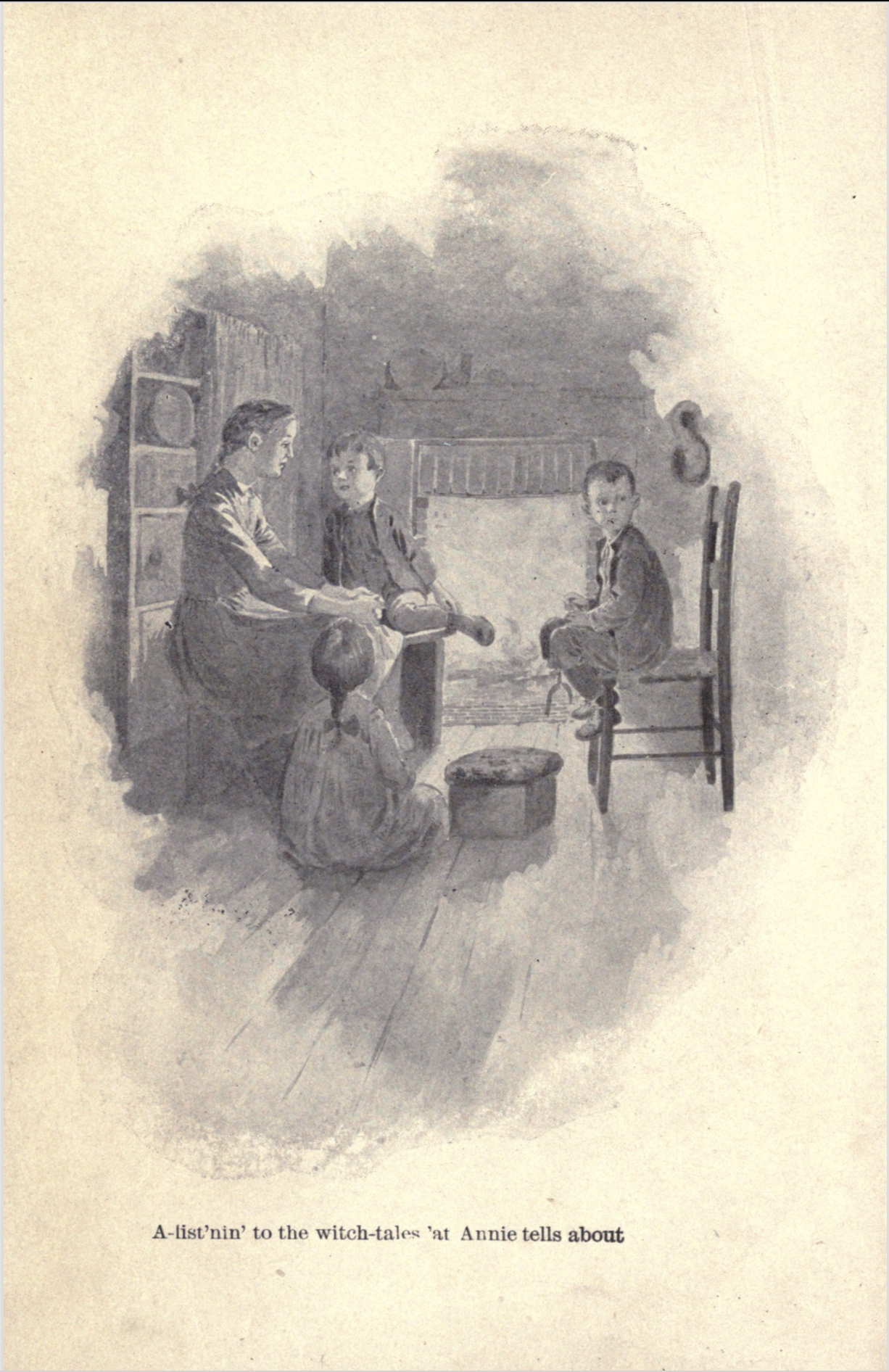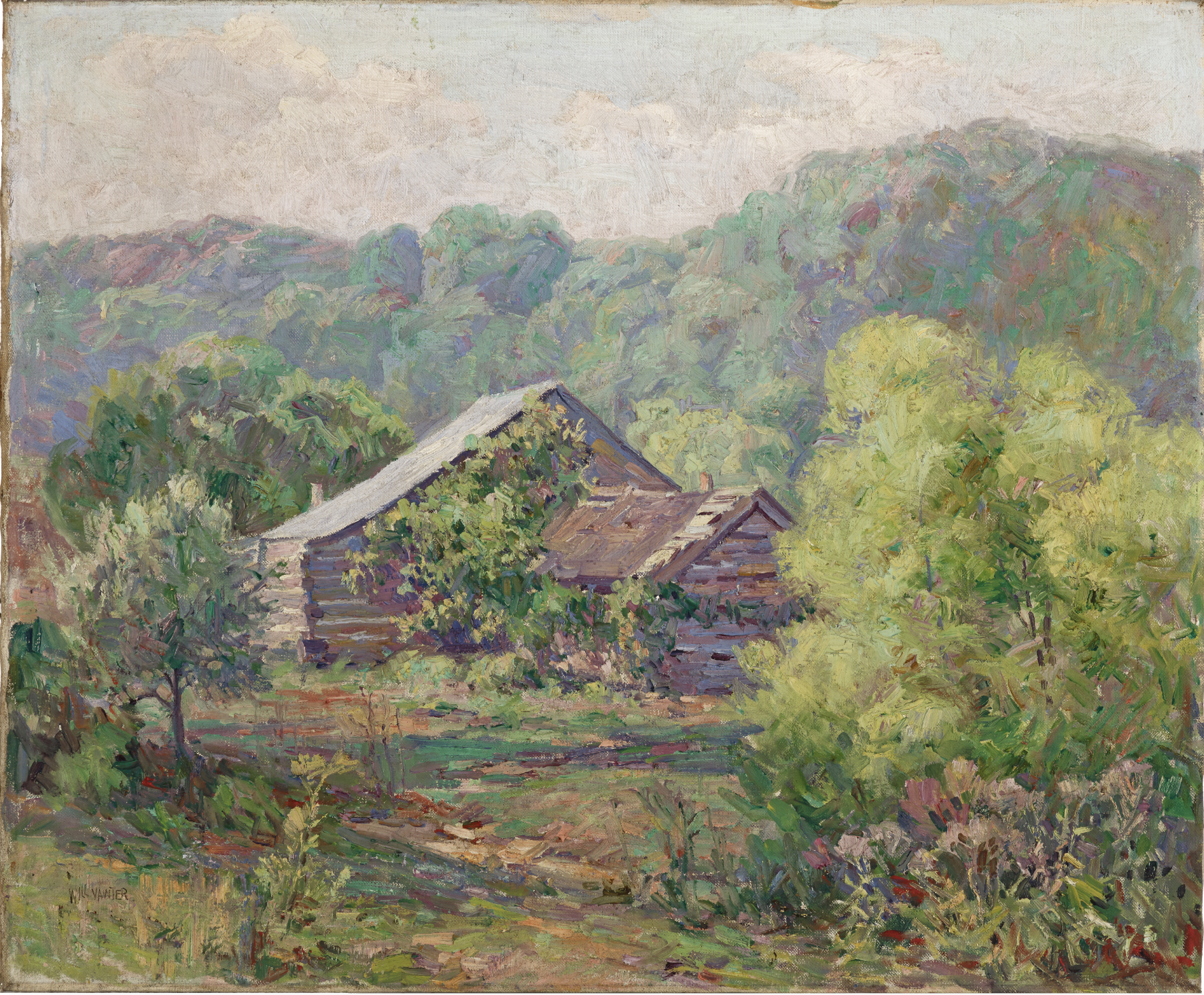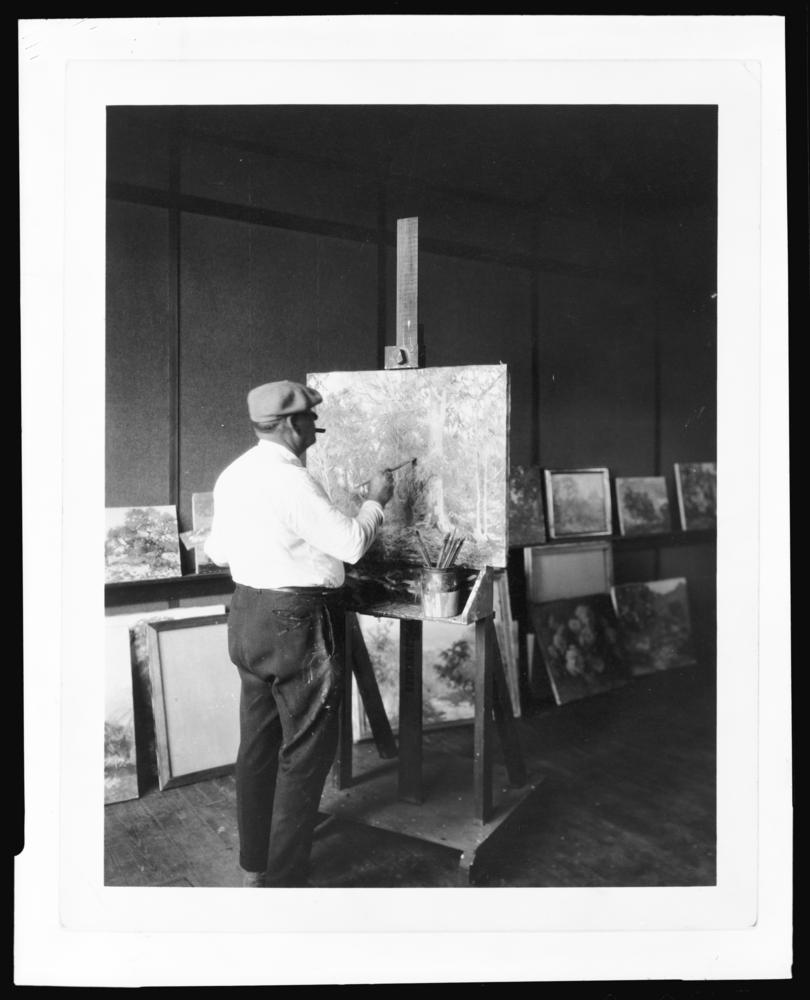
Photo info ...
Credit: Public domain via Wikimedia CommonsView Source
(Apr. 13, 1871-Feb. 11, 1941). John William Vawter was born in Boone County, West Virginia. He moved to , Indiana, the county seat of , with his family in 1877. Though mostly self-taught, Vawter studied at the and the Art Students League in New York City, where Indiana native taught Impressionism. Upon returning to Indiana, Vawter worked as an illustrator for the Hancock Democrat and the before landing a job as an illustrator for the in 1891.

Vawter’s prominence as an artist increased after the asked him to illustrate poem “Armazindy: A Borned Soldier and Hero,” in a special (GAR) encampment week edition, on September 5, 1893. Riley penned the poem to coincide with the meeting of this fraternal organization of Union Civil War veterans in Indianapolis. The two men had become friends in Greenfield, and the Journal chose Vawter because of their shared Greenfield origins. Vawter’s illustrations of Riley’s poem led to a 30-year creative partnership between the illustrator and the poet.
In addition to collaborating with Riley, Vawter illustrated the works of other authors including American educator, editor, and historian John Clark Ridpath (Epic of Life, 1893) and the then-popular Iowa humorist Robert J. Burdette (Smiles Yoked with Sighs, 1900).
In 1906, Vawter married landscape artist and poet Mary H. Murray. By 1909, the couple had followed artist T. C. Steele and American Impressionist painter Adolph R. Shulz to Brown County in southern Indiana. There, the Vawters bought a scenic farm they called “Rattlesnake Terrace.” The name referenced the wild and dangerous look of some local fauna, contrasting sharply with Steele’s more idyllic-sounding name for his Brown County property—“House of Singing Winds.” Steele and Shulz befriended Vawter and inspired him to sharpen his artistic skills by observing and capturing the local landscape and people in his illustrations.
Vawter continued to earn a living through magazine and book illustrations. He leaned on Brown County residents as models to illustrate 11 volumes of editions of Riley’s poetry from 1908 to 1926. Two years later, Vawter, Shulz, and other Brown County artists founded the Brown County Art Gallery to provide space for artists to display their work, highlighting the development of a distinct American Impressionist style.

The refinement of Vawter’s craft became evident with his interest in oil painting. As an accomplished painter, Vawter’s works made their way to Indianapolis’ , which included an art gallery, and the inaugural exhibition at Marshall Field & Company from March 9-19, 1925. Vawter won a $100 prize at the first Hoosier Salon for his painting Our Alley, which depicted a Brown County winter scene. During the 1930s, he continued to exhibit at the Lieber Gallery and the Hoosier Salon.

Vawter also began traveling to New England in the 1930s, and seascapes became a recurring theme of his paintings. In 1936, the Lieber gallery featured Vawter’s marine paintings in a one-person show. By this time, longtime art critic Lucille Morehouse had grown tired of the style of the Brown County artists. She claimed that they were celebrated chiefly because they painted “the kind of pictures that people like to hang in their homes.” She, therefore, had expected Vawter to approach his seascapes “timidly,” resisting modernism and creating paintings that smoothed “away the cares of the day.” In her review of the 1936 exhibition of his marine landscapes, Morehouse found that Vawter’s work had become more abstract with “broadly painted canvas.” She praised his spontaneity and the “striking evidence of genius” in his work.
Vawter’s 1938 one-person show at the Lieber gallery included a mix of subjects, including his Brown County scenes. Morehouse proclaimed that this exhibition topped his previous shows. His last exhibition opened in December 1940 at the gallery, only a couple of months before his death.
Hancock County Arts, established in 1996 initially in partnership with Greenfield Parks to develop the county’s arts community, inaugurated the annual Will Vawter Art Show, a juried art exhibition, in 1999. To commemorate the 150th anniversary of his birth, a bronze statue that depicts Vawter while painting, was unveiled at the James Whitcomb Riley birthplace in Greenfield in September 2021 and was later moved to Depot Street Park.

Help improve this entry
Contribute information, offer corrections, suggest images.
You can also recommend new entries related to this topic.